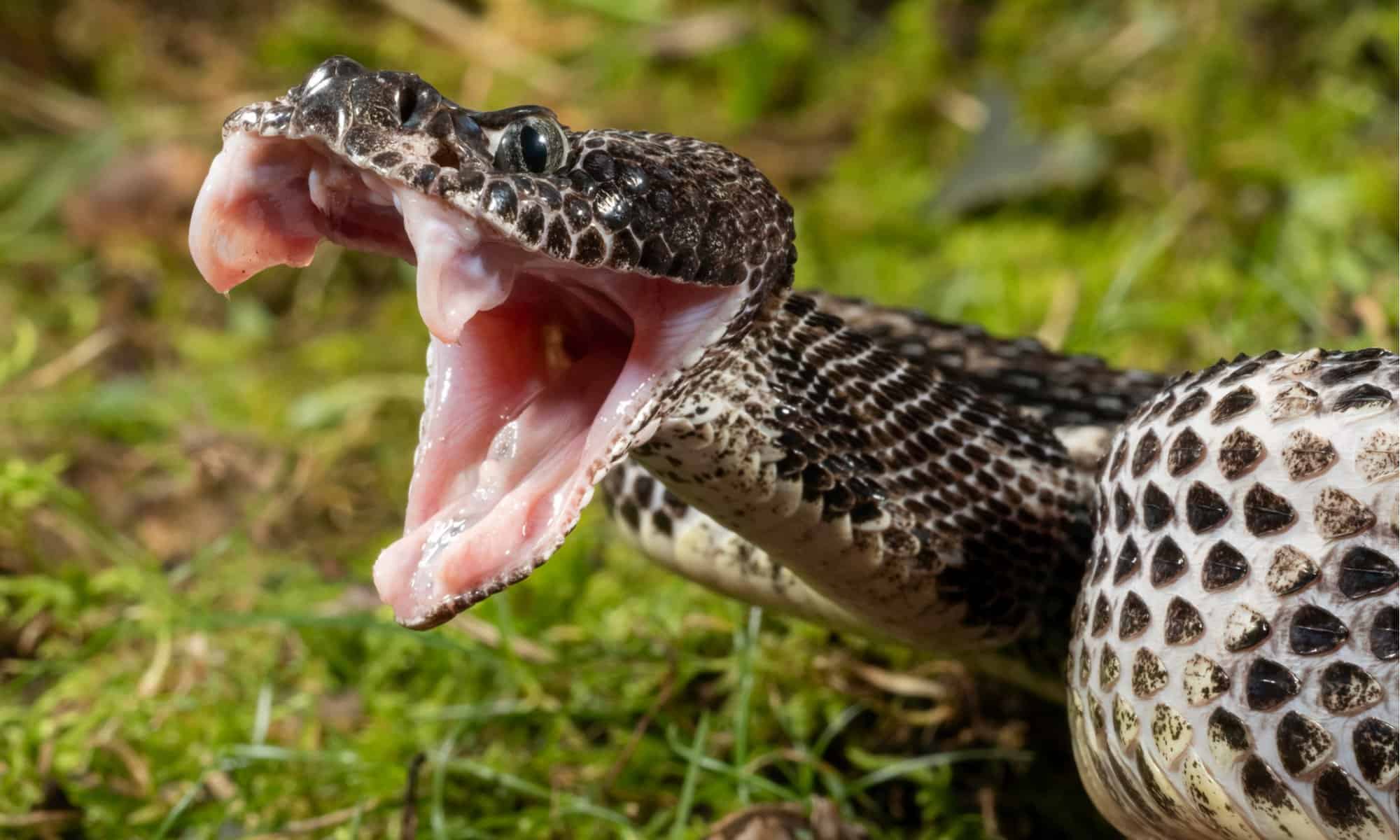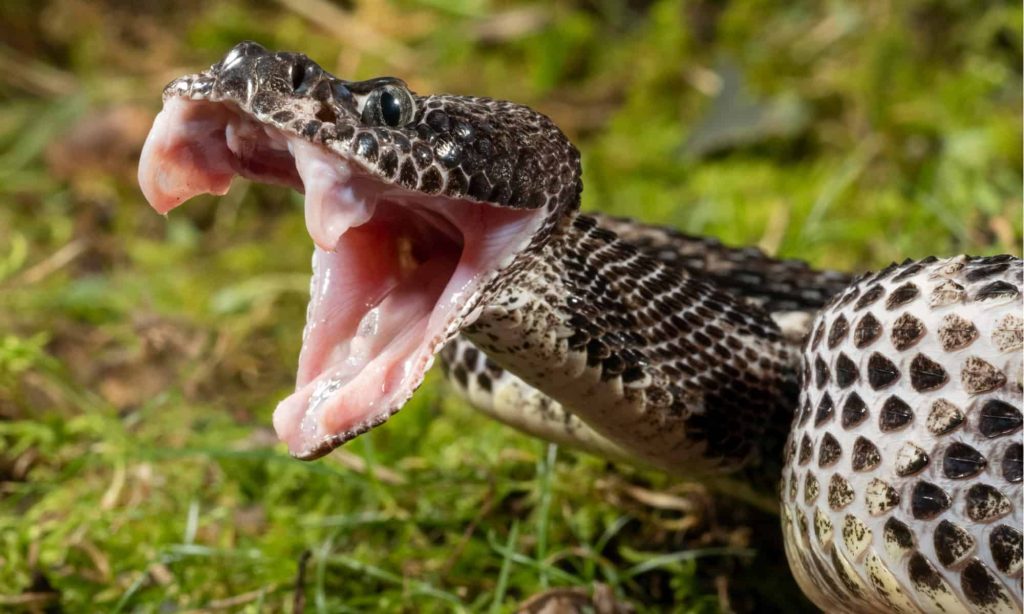Rattlesnakes are some of the most feared creatures on the planet. Their venomous bite can cause serious harm and even death. But just how dangerous are rattlesnakes? Can they really kill you?
While rattlesnake bites are serious, they are rarely fatal. In fact, less than 10% of rattlesnake bites result in death. However, it’s still important to understand the risks associated with these snakes and how to stay safe in their presence. So, let’s explore the fascinating world of rattlesnakes and discover the truth behind their deadly reputation.
Yes, a rattlesnake can kill you. Rattlesnakes are venomous and their bites can be fatal if left untreated. The venom can cause severe pain, swelling, and tissue damage, and can also affect the heart and respiratory system. If you are bitten by a rattlesnake, seek medical attention immediately.

Can a Rattlesnake Kill You?
Rattlesnakes are among the most feared and dangerous snakes in the world. These venomous creatures are known for their distinctive rattle, which warns potential predators of their presence. Rattlesnakes are found throughout North and South America, and their venom can be deadly to humans. In this article, we will explore the potential dangers of rattlesnakes and what you can do to protect yourself.
Understanding Rattlesnake Venom
Rattlesnakes are venomous, meaning that they inject toxins into their prey or attackers through their fangs. Rattlesnake venom is a complex mixture of proteins and enzymes that can cause a range of symptoms in humans, from minor pain and swelling to life-threatening complications.
The severity of a rattlesnake bite depends on several factors, including the size of the snake, the amount of venom injected, and the location of the bite. In general, bites to the face, neck, and trunk are more dangerous than bites to the limbs.
If you are bitten by a rattlesnake, it is important to seek medical attention immediately. Antivenom is available and can be highly effective in treating rattlesnake bites.
The Symptoms of Rattlesnake Bites
The symptoms of a rattlesnake bite can vary depending on the individual and the severity of the bite. Some common symptoms include:
– Severe pain at the site of the bite
– Swelling and bruising
– Nausea and vomiting
– Weakness and dizziness
– Rapid heartbeat
– Difficulty breathing
– Loss of consciousness
In severe cases, rattlesnake bites can be fatal. However, with prompt medical attention and the use of antivenom, most people recover fully from rattlesnake bites.
Preventing Rattlesnake Bites
The best way to avoid a rattlesnake bite is to stay away from these creatures whenever possible. Rattlesnakes are most active in the spring and summer months, and they tend to avoid areas with heavy human traffic. If you are hiking or camping in an area where rattlesnakes are common, there are several steps you can take to reduce your risk of being bitten:
– Wear long pants and boots to protect your legs and feet.
– Stay on designated trails and avoid walking through tall grass or brush.
– Use a walking stick to probe the ground in front of you as you walk.
– Keep your pets on a leash and avoid letting them explore areas where rattlesnakes may be hiding.
– Be aware of your surroundings and listen for the sound of a rattlesnake’s rattle.
What to Do If You Encounter a Rattlesnake
If you come across a rattlesnake, the best thing to do is to give it plenty of space and avoid disturbing it. Rattlesnakes are generally not aggressive unless they feel threatened, so if you keep your distance, you should be safe.
If a rattlesnake does bite you, it is important to remain calm and seek medical attention immediately. Do not try to suck out the venom or use a tourniquet, as these methods can actually make the situation worse.
Rattlesnakes vs. Other Venomous Snakes
While rattlesnakes are certainly dangerous, they are not the only venomous snakes to be found in North and South America. Other venomous snakes include copperheads, cottonmouths, and coral snakes.
Copperheads and cottonmouths are both pit vipers like rattlesnakes, and their venom can be just as dangerous. Coral snakes, on the other hand, are members of the elapid family and have neurotoxic venom that can cause paralysis and respiratory failure.
In general, the best way to avoid being bitten by any venomous snake is to stay away from them whenever possible and be aware of your surroundings. If you do encounter a venomous snake, it is important to seek medical attention immediately.
The Benefits of Rattlesnakes
While rattlesnakes may be dangerous to humans, they play an important role in their ecosystems. Rattlesnakes are apex predators, meaning that they help to control the populations of smaller animals like rodents and insects.
In addition, rattlesnake venom has been used to develop important drugs and antivenoms. For example, a protein found in rattlesnake venom is being studied as a treatment for blood clots, while an antivenom made from rattlesnake venom has saved countless lives.
In Conclusion
Rattlesnakes are certainly dangerous animals, but with proper precautions and prompt medical attention, most people who are bitten by these creatures will recover fully. By staying aware of your surroundings and avoiding unnecessary risks, you can reduce your risk of encountering a rattlesnake and stay safe in the great outdoors.
Frequently Asked Questions
What happens if you get bitten by a rattlesnake?
If you get bitten by a rattlesnake, the venom can cause a range of symptoms including pain, swelling, and bleeding. In severe cases, the venom can also cause organ failure and death. It’s important to seek medical attention immediately if you are bitten by a rattlesnake.
How venomous are rattlesnakes?
Rattlesnakes are highly venomous and their venom can be fatal to humans. The potency of the venom can vary depending on the species of rattlesnake, but it is always important to treat a rattlesnake bite as a medical emergency.
What can you do to prevent getting bitten by a rattlesnake?
To prevent getting bitten by a rattlesnake, it’s important to be aware of your surroundings when you are in areas where rattlesnakes are known to live. Wear protective clothing such as boots and long pants, and avoid putting your hands or feet in areas where you can’t see what’s there.
What should you do if you encounter a rattlesnake?
If you encounter a rattlesnake, it’s important to stay calm and avoid startling or provoking the snake. Keep a safe distance and slowly retreat from the area. Do not attempt to handle or capture the snake, as this can be dangerous.
Can rattlesnake venom be used for medical purposes?
Yes, rattlesnake venom can be used for medical purposes such as antivenom and pain relief medication. However, it is important to only use rattlesnake venom under the supervision of a medical professional, as it can be dangerous if used improperly.
What Happens if a Rattlesnake BITES You?
In conclusion, the answer to the question “Can a rattlesnake kill you?” is a resounding yes. The venom of a rattlesnake is highly potent and can cause a range of symptoms, from pain and swelling to organ failure and death. It’s important to remember that rattlesnakes are not aggressive creatures and will only attack if they feel threatened. By taking simple precautions, such as wearing appropriate clothing and footwear and being aware of your surroundings, you can avoid encountering these dangerous snakes.
However, if you do happen to come across a rattlesnake, it’s important to know how to react. The first step is to stay calm and slowly back away from the snake. Do not attempt to handle the snake or provoke it in any way. If you are bitten, seek medical attention immediately. Remember that time is of the essence when it comes to treating a rattlesnake bite, so don’t delay in seeking help.
In conclusion, while rattlesnakes can be deadly, they are an important part of our ecosystem and should be respected and protected. By learning more about these fascinating creatures and taking the necessary precautions, we can coexist with them safely and enjoy the beauty of nature without fear.


